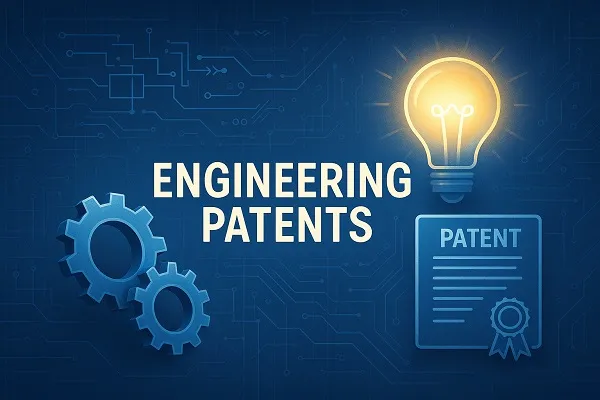Engineering patents are essential for protecting inventions, technologies, and processes created by engineers. They not only safeguard intellectual property but also give inventors exclusive rights to their innovations. Understanding how engineering patents work, the types available, and the application process is vital for anyone looking to protect their engineering breakthroughs.
What Is an Engineering Patent?
An engineering patent is a legal right granted to an inventor, allowing them to exclude others from making, using, or selling their invention without permission. These patents are particularly important in industries like mechanical engineering, civil engineering, electrical engineering, and software engineering.
- Exclusive rights: Protects the inventor’s creation from being copied.
- Innovation recognition: Confirms the originality and utility of the invention.
- Commercial advantage: Allows inventors or companies to monetize their work.
Types of Engineering Patents
Not every engineering innovation is protected in the same way. Different categories of patents exist depending on the nature of the invention.
Utility Patents
- Protect new processes, machines, or methods.
- Common for mechanical devices, manufacturing methods, and software algorithms.
Design Patents
- Safeguard the unique appearance or design of a product.
- Ideal for engineers working on product aesthetics or industrial design.
Provisional Patents
- Offer temporary protection before filing a full utility patent.
- Useful for engineers still refining their invention but wanting early protection.
Why Engineering Patents Matter
Securing patents can make the difference between leading an industry and losing out to competitors.
- Encourages innovation by giving engineers confidence to invest time and resources.
- Attracts investors by showing commitment to protecting intellectual property.
- Enhances reputation as a recognized innovator in the engineering field.
- Generates revenue through licensing agreements and royalties.
The Patent Application Process

Applying for an engineering patent involves several key steps, and understanding them can help inventors avoid costly mistakes.
Step 1: Conduct a Patent Search
Before filing, ensure your invention is unique. Search existing patents in databases such as the USPTO or WIPO.
Step 2: Prepare Documentation
- A detailed description of the invention
- Technical drawings or diagrams
- Specific claims defining the invention’s scope
Step 3: File With the Patent Office
File your application with the relevant patent office (e.g., USPTO in the U.S.). Depending on complexity, this may require assistance from a patent attorney.
Step 4: Examination and Approval
A patent examiner reviews your submission for novelty and usefulness. This process may take months or even years.
Common Mistakes Engineers Make
Engineers often run into avoidable pitfalls when seeking patent protection.
- Delaying the application: Waiting too long can result in losing patent rights.
- Public disclosure: Revealing an invention before filing may compromise protection.
- Poor documentation: Lack of technical clarity can weaken an application.
- Skipping legal help: Patent law is complex, and professional guidance is highly recommended.
Engineering Patents Around the World
Patent laws vary by country, and international protection requires a broader strategy.
U.S. Engineering Patents
- Governed by the United States Patent and Trademark Office (USPTO)
- Typically valid for 20 years from the filing date
European Engineering Patents
- Managed by the European Patent Office (EPO)
- A single application can cover multiple EU countries
International Protection
- The Patent Cooperation Treaty (PCT) allows inventors to file one application for protection in over 150 countries.
Costs Involved in Securing a Patent
The cost of filing for an engineering patent depends on complexity and geography.
- Filing fees: Range from a few hundred to several thousand dollars.
- Attorney fees: Can exceed $10,000 depending on the invention.
- Maintenance fees: Required to keep patents active after approval.
While expensive, the investment is often worthwhile for inventions with strong commercial potential.
Benefits for Engineering Companies

For engineering firms, patents are not just legal tools—they’re business assets.
- Strengthen company valuation
- Prevent competitors from entering specific markets
- Support mergers, acquisitions, or partnerships
- Enable licensing opportunities and revenue streams
How to Strengthen Your Patent Strategy
Engineers and companies should think strategically about intellectual property.
- File early to secure priority.
- Build a portfolio of patents covering different aspects of your invention.
- Monitor competitors for potential infringements.
- Renew regularly to maintain protection.
Practical Examples of Engineering Patents
- Mechanical engineering: New turbine blade designs for improved energy efficiency.
- Civil engineering: Innovative earthquake-resistant building materials.
- Electrical engineering: Circuit boards with advanced energy-saving systems.
- Software engineering: Algorithms improving data compression or cybersecurity.
These examples highlight how patents apply across engineering disciplines.
Content reviewed and published by Tier2Tek Staffing Editorial Team .

